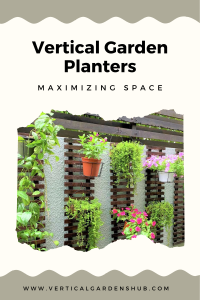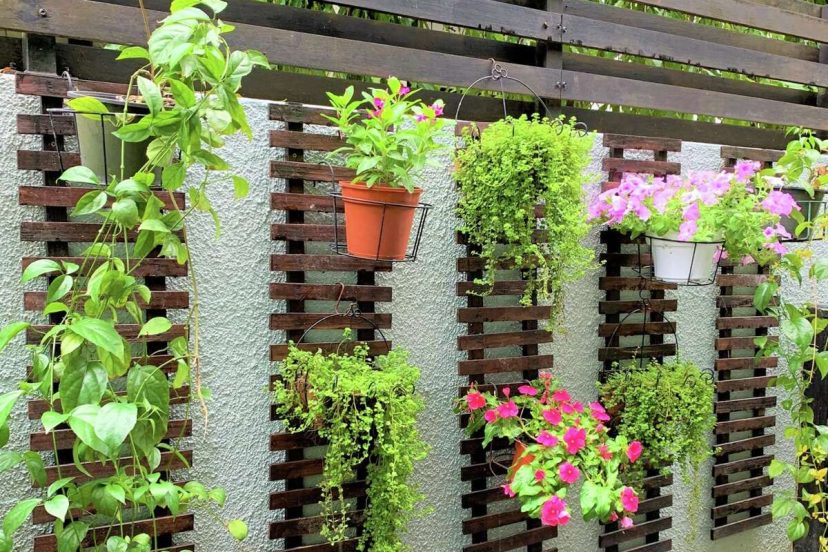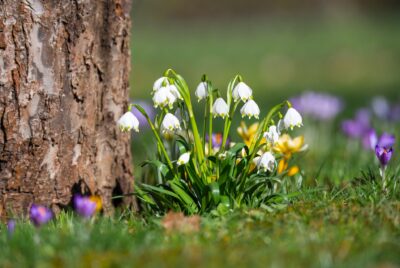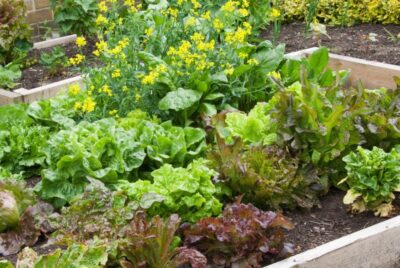Vertical Garden Planters: Maximizing Space
Vertical garden planters, the innovative solutions that bring greenery to new heights offer numerous benefits, from space optimization to improved plant health. These versatile containers allow us to bring nature closer, even in limited spaces. With vertical planters, gardening becomes a creative and rewarding experience, providing an abundance of greenery and beauty.
Contents Covered
- What are Vertical Garden Planters
- Hanging Vertical Planters
- Wall-Mounted Vertical Planters
- Freestanding Vertical Planters
- Living Wall Systems
- Vertical Planter Materials and Design
- Benefits of Using Vertical Garden Planters
- Vertical Planters for Urban Gardening
What are Vertical Garden Planters?
Vertical garden planters are specially designed containers that enable us to grow plants vertically, either on walls, railings, or freestanding structures. They come in various shapes and sizes, making them suitable for various plant species and garden styles.
Hanging Vertical Planters
Hanging vertical garden planters are suspended containers that add a touch of charm to any space. They are perfect for cascading plants and trailing vines, creating a picturesque display of foliage.
Ideal Plant Choices for Hanging Planters:
- Trailing plants: Choose plants like ivy, pothos, and philodendron, which gracefully spill over the edges of the planter.
- Herb gardens: Grow herbs like mint, oregano, and thyme in hanging planters for easy access to fresh culinary delights.
- Abundant blooms: Flowering plants like Fuchsia and Gardenia take any hanging planter to the new heights.
Tips for Installing and Maintaining Hanging Planters:
- Sturdy hooks or brackets: Ensure that the hooks or brackets supporting the planters are securely attached to the ceiling or wall.
- Adequate sunlight: Place hanging planters in locations where plants receive sufficient sunlight for healthy growth.
Wall-Mounted Vertical Planters
Wall-mounted vertical planters are an excellent choice for creating living artwork on walls and fences. They offer a vertical garden canvas that can transform blank spaces into lush green features.
Suitable Plants for Wall-Mounted Planters:
- Compact herbs: Grow compact herbs like basil, parsley, and chives on wall-mounted planters for easy access and visual appeal.
- Succulents and cacti: Showcase an array of succulents and cacti for a low-maintenance and modern vertical garden design.
- Fragrance and Blooms: Lemon Balm and Baby’s Tears are good choices for wall-mounted planters
Design Ideas and Considerations for Wall-Mounted Planters:
- Vertical garden patterns: Arrange planters in unique patterns to create eye-catching designs on the wall.
- Proper drainage: Ensure that wall-mounted planters have adequate drainage to prevent water buildup on the wall surface.
Freestanding Vertical Planters
Freestanding vertical garden planters are independent structures that offer flexibility and mobility. They are perfect for creating focal points in gardens or patio areas. The versatility of freestanding planters includes:
Plant Options for Freestanding Vertical Planters:
- Bushy shrubs: Grow small shrubs like boxwood or lavender to add structure and texture to your freestanding planters.
- Flowering perennials: Choose colorful perennials like coneflowers, daisies, and salvias for a vibrant and ever-changing vertical garden.
- Cascading Plants: Select cascading plants like Million Bells or Verbena for colorful, trailing growth.
Placement and Care Tips for Freestanding Vertical Garden Planters:
- Mobile planters: Choose wheeled planters, allowing you to move them easily to optimize sun exposure or change the garden’s layout.
- Adequate stability: Ensure that freestanding planters are stable and well-balanced to withstand wind and external elements.
Living Wall Systems
Living wall systems, also known as green walls, are vertical gardens that create living artworks on building facades and interior spaces. They offer a host of ecological benefits and add a touch of sophistication to any environment. The concept and advantages of living walls include:
Ecological Benefits of Living Walls:
- Air purification: Living walls act as natural air purifiers, absorbing pollutants and releasing oxygen into the surrounding area.
- Temperature regulation: Living walls contribute to temperature moderation by providing insulation and reducing heat island effects.
How to Create and Maintain a Living Wall System:
- Selecting appropriate plants: Choose plants with low water and maintenance requirements that suit the specific lighting conditions of the wall.
- Irrigation and monitoring: Implement an efficient irrigation system and regularly monitor the health of the plants to ensure they thrive.
Vertical Planter Materials and Design
When selecting vertical planters, considering the materials and design is essential for optimal plant growth and longevity. Some important considerations include:
Sustainable and Eco-Friendly Planter Materials:
- Recycled materials: Opt for planters made from recycled plastics or metals to minimize the demand for new resources.
- Biodegradable options: Choose planters made from biodegradable materials like coconut coir or rice husks, reducing waste.
Design Features to Consider for Optimal Plant Growth:
- Drainage: Ensure that the planters have proper drainage holes to prevent waterlogged soil and root rot.
- Water retention: Select planters with built-in water reservoirs or self-watering systems to maintain consistent moisture levels.
Benefits of Using Vertical Planters
Vertical gardening with planters offers numerous benefits, making it an attractive option for both beginners and experienced gardeners. Some key advantages include:
Space-Saving Advantages of Vertical Gardening:
- Maximizing small spaces: Vertical planters enable gardening in limited areas such as balconies, patios, and small yards.
- Creating green walls: Vertical planters can transform dull walls into lush green spaces, adding aesthetic appeal to urban environments.
Enhanced Plant Health and Growth with Vertical Planters:
- Improved air circulation: Vertical planters promote better airflow, reducing the risk of fungal diseases and promoting plant health.
- Access to sunlight: Elevated positioning allows plants to receive more sunlight, leading to healthier and vigorous growth.
Vertical Planters for Urban Gardening
Urban gardening can present unique challenges, but vertical planters offer innovative solutions to bring nature to urban dwellers. Some vertical gardening solutions for urban settings include:
Vertical Gardening Solutions for Urban Settings:
- Balcony gardens: Utilize vertical planters to create lush balcony gardens, even in high-rise apartments.
- Community gardens: Establish communal vertical gardens in urban neighborhoods, fostering a sense of community and shared responsibility.
Community and Educational Impacts of Vertical Planters:
- Engaging communities: Vertical gardening initiatives can bring people together, encouraging cooperation and promoting green practices.
- Educational opportunities: Vertical gardens in public spaces or schools can serve as educational tools, teaching the importance of sustainability and gardening.
Conclusion
Vertical garden planters open a world of possibilities for gardeners, offering creative ways to bring greenery into our lives. From hanging and wall-mounted planters to freestanding structures and living walls, these innovative containers redefine the boundaries of gardening. By using sustainable materials and considering plant needs, vertical planters not only beautify our surroundings but also support a more sustainable and eco-conscious future.

FAQs
Q: Can I use vertical garden planters for indoor gardening?
Absolutely! Vertical planters can be adapted for indoor gardening, brightening up interior spaces and improving air quality.
Q: Which types of plants are best suited for living wall systems?
Choose low-maintenance plants such as ferns, moss, and succulents for living walls, as they thrive in vertical conditions and have minimal water requirements.
Q: How do I choose the right location for freestanding vertical planters?
Select a location that receives adequate sunlight and complements the overall aesthetics of your garden or patio area.
Q: Are vertical planters suitable for growing edible plants?
Yes, vertical planters are excellent for growing herbs, vegetables, and even small fruiting plants, providing fresh produce right at your fingertips.
Q: Do vertical garden planters require special maintenance?
While vertical planters generally require regular watering and occasional pruning, the maintenance is like traditional gardening, making them accessible to all gardening enthusiasts.





